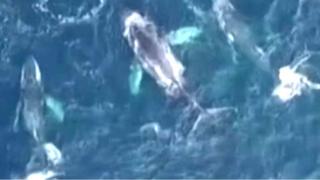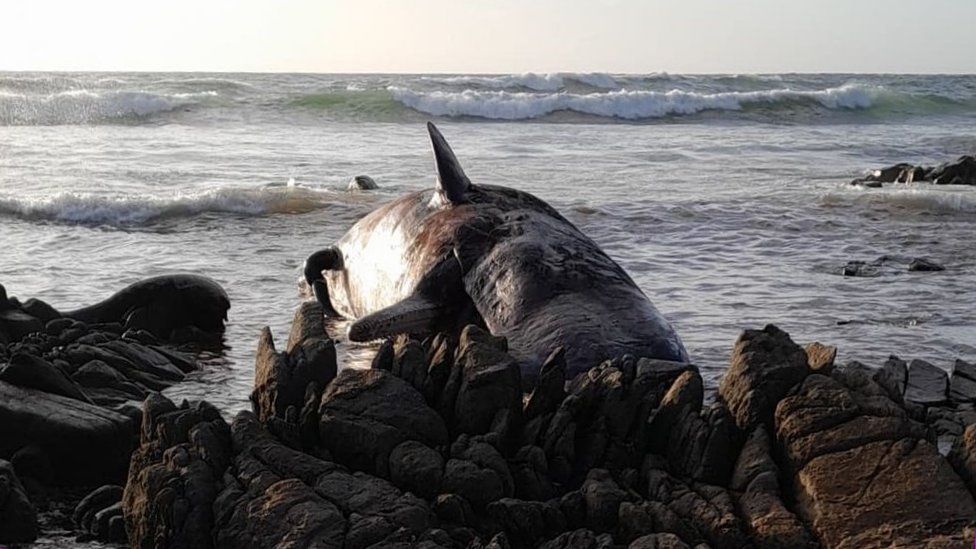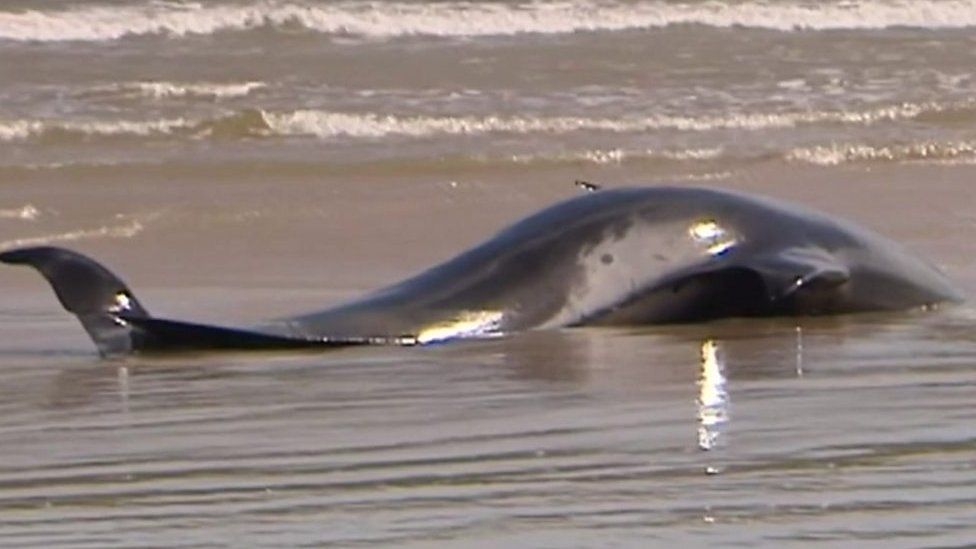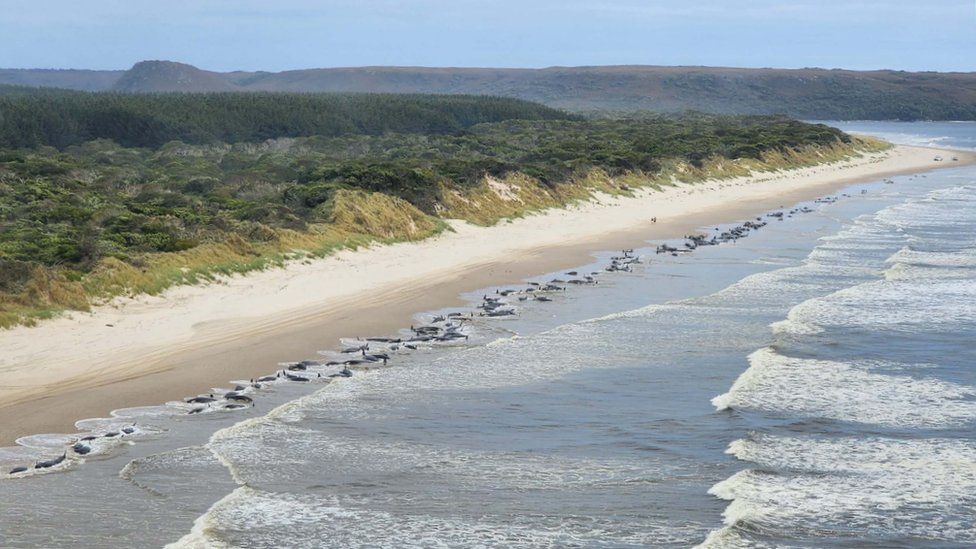 Department of Natural Resources and Environment
Department of Natural Resources and EnvironmentMore than 200 whales have beached themselves in a mass stranding in Tasmania, Australia.
The whales, half of which appear to still be alive, were discovered in Macquarie Harbour – the same location where the country’s worst stranding occurred exactly two years ago.
The reason for this stranding is unknown, but whale rescuers have been sent to help.
It comes just one day after a separate mass stranding incident in Tasmania.
The incident on Tuesday saw 14 young sperm whales found dead on King Island, in Tasmania’s Bass Strait.
The 230 whales discovered in Macquarie Harbour on Wednesday are believed to be pilot whales.
The highly social mammals are well known for stranding in groups because they travel in large, close-knit communities which rely on constant communication.
Experts are planning a rescue but the operation will be “complex” due to the location, Tasmania’s environment department said in a statement.
Macquarie Harbour is a large, shallow inlet in a rural area on the state’s west coast. More of the whales are expected to die overnight.
In September 2020, a huge rescue operation was launched when almost 500 pilot whales became stranded in the same harbour.
More than 380 of the pilot whales died, but about 100 survived thanks to rescuers.
Wildlife scientist Vanessa Pirotta told the BBC the similarities between the stranding and the last one – same species, same location, same time of year – are “unusual” and concerning.
The whales may have “misnavigated”, followed a sick or disoriented leader, or been startled into shallower waters, she said.
Climate change could have an impact too – changes in the environment, water temperature, or prey habitats could throw the whales off.
But the reasons behind whale strandings remain a “mystery”, she says, as does why Tasmania sees so many of them.
There’s lots of marine life in the area – more animals could mean more incidents – and there are also a lot of currents intersecting with the land.
But the “giant island” itself could just be a navigational hazard for animals that use echolocation, she says.
“You’re going from essentially open waters and then there’s land all of a sudden.”

You may also be interested in:
This video can not be played
To play this video you need to enable JavaScript in your browser.
-
-
30 November 2018
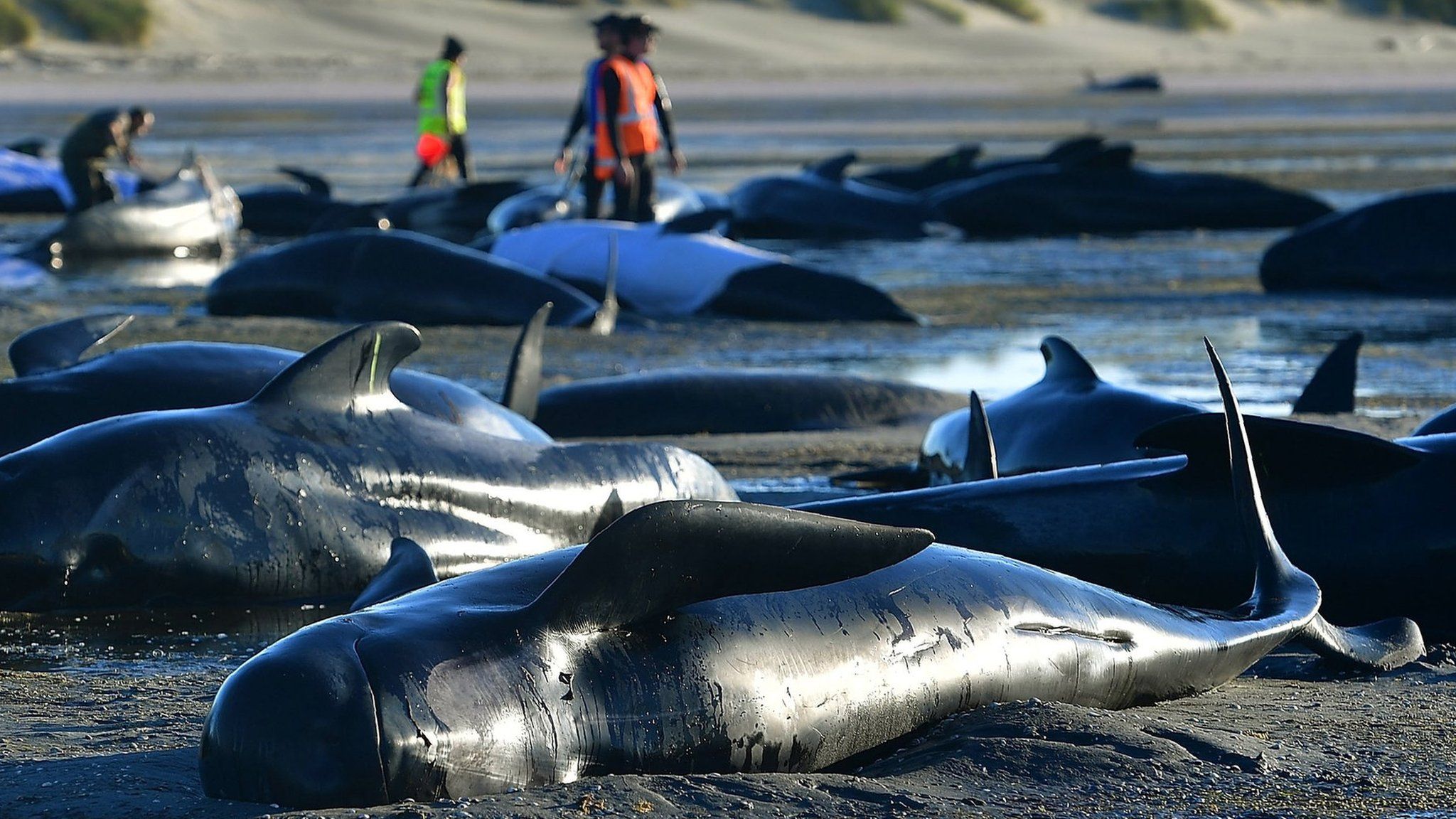
-
-
-
13 September 2021
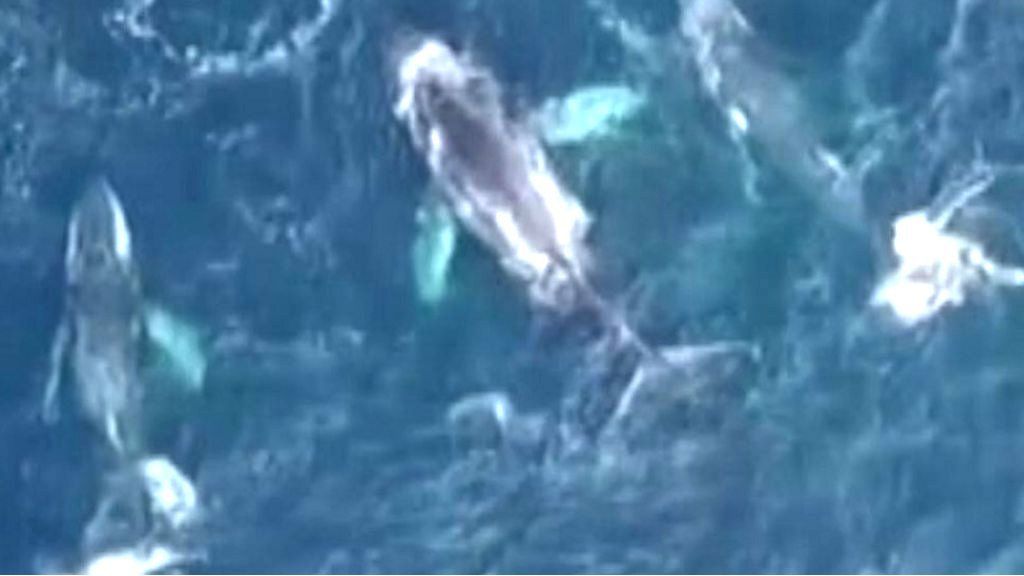
-

